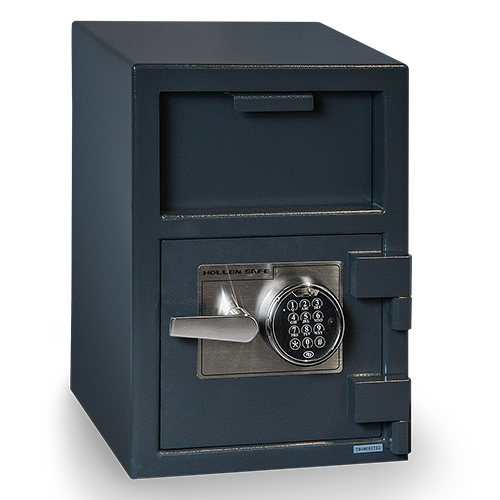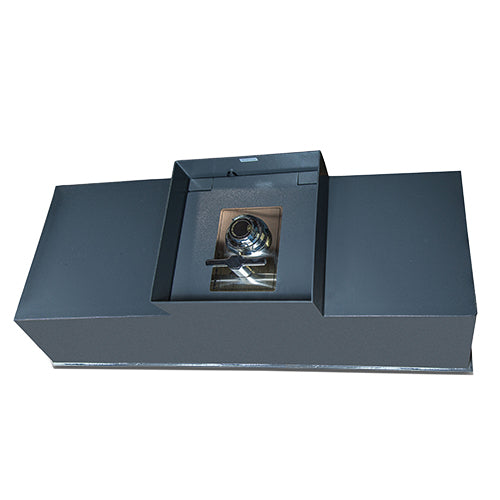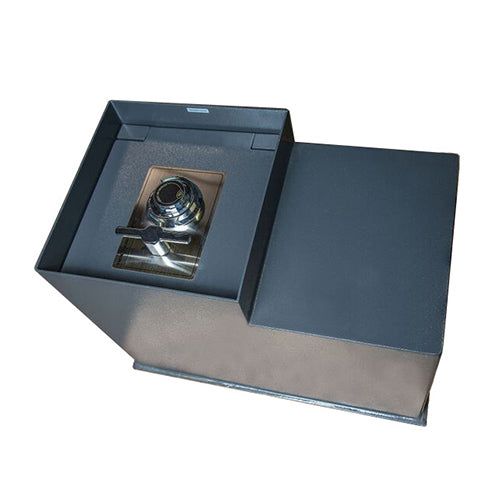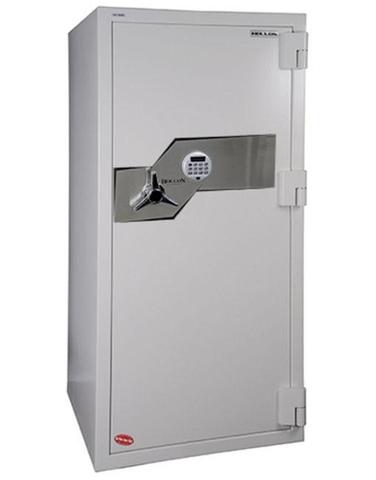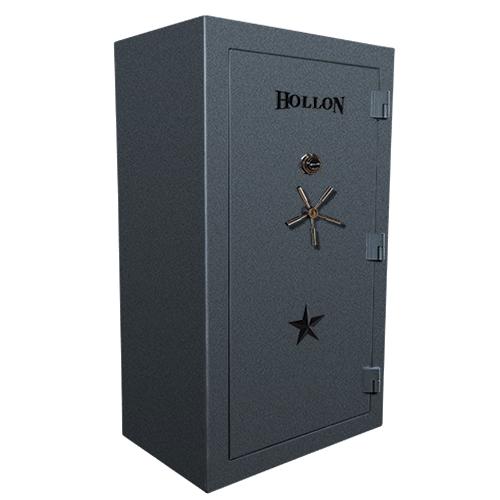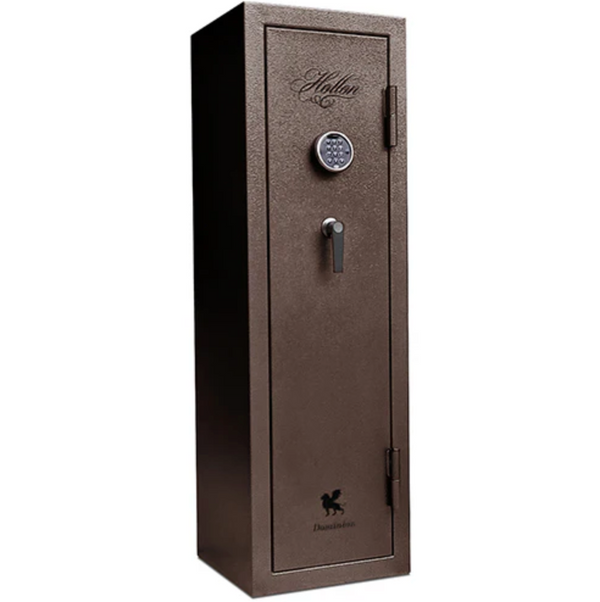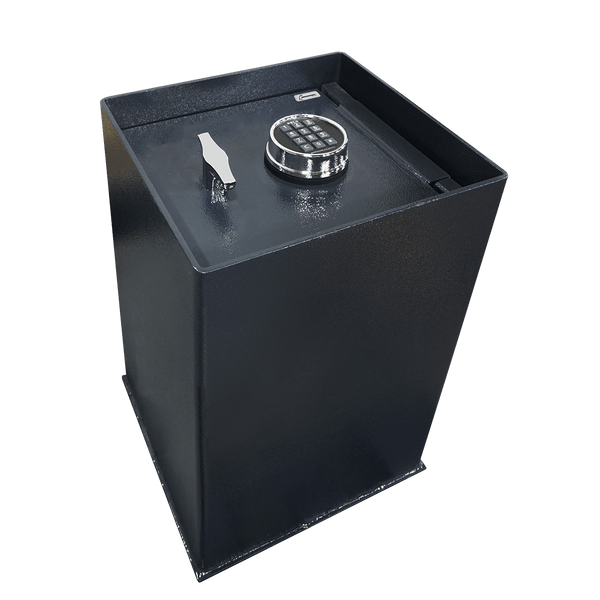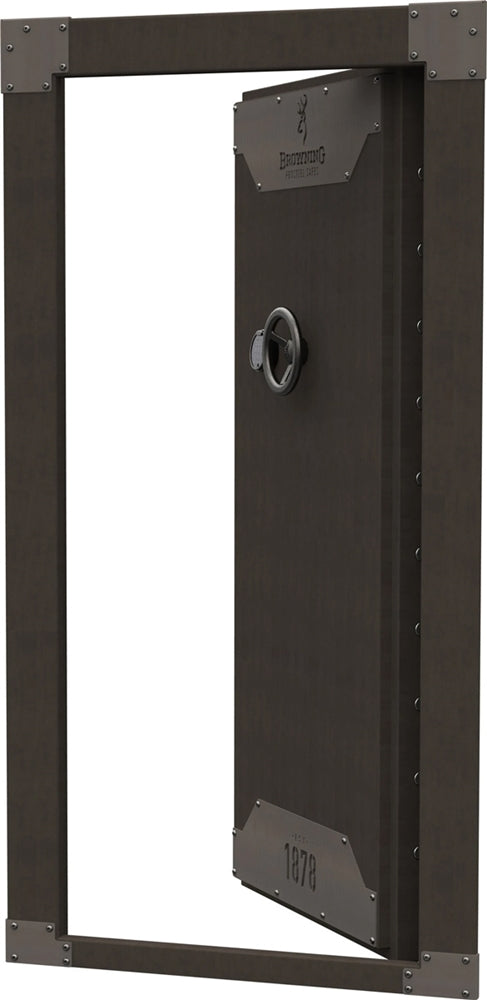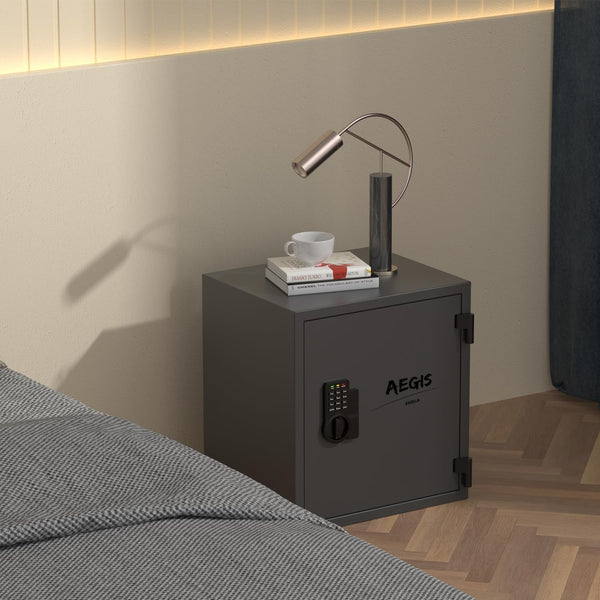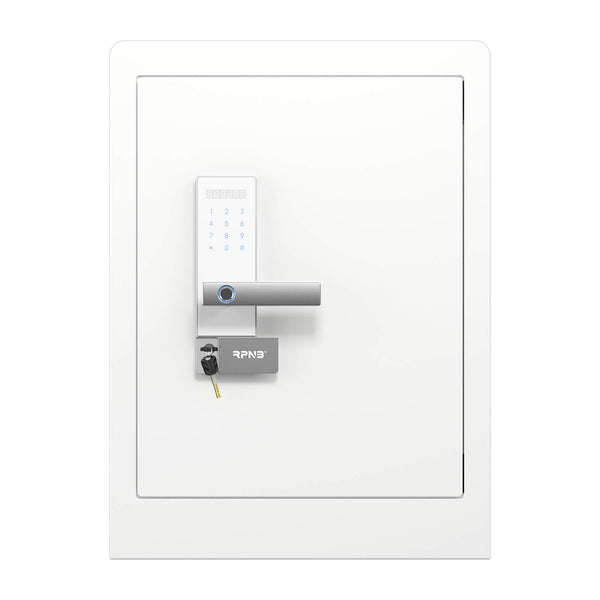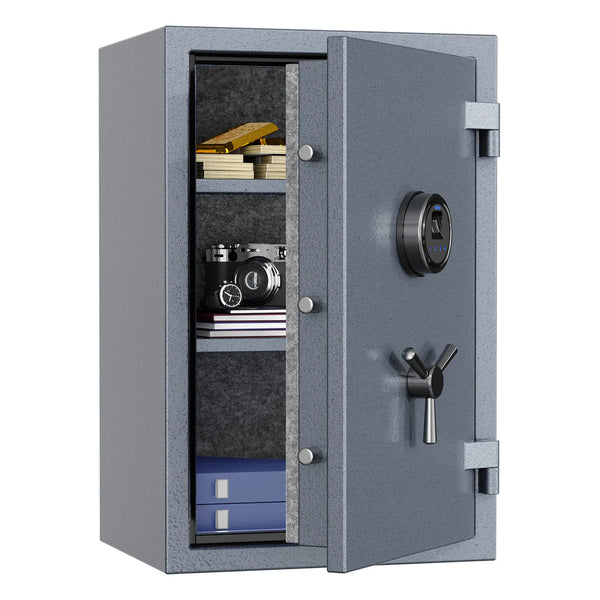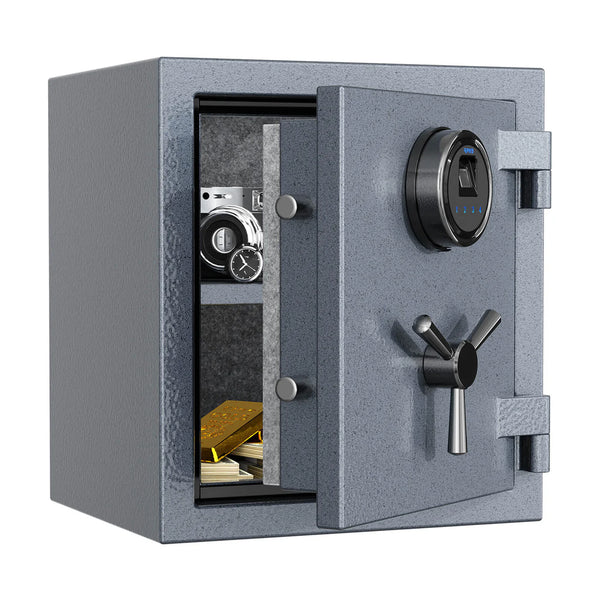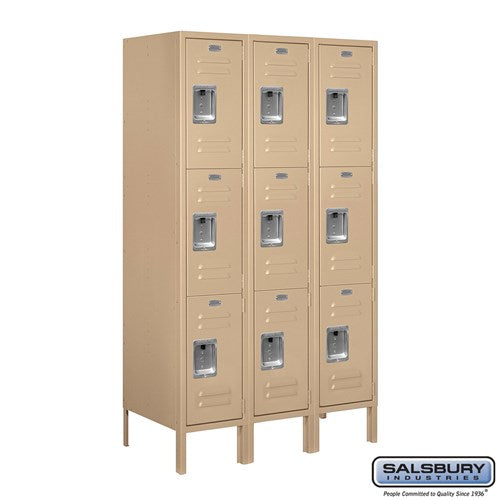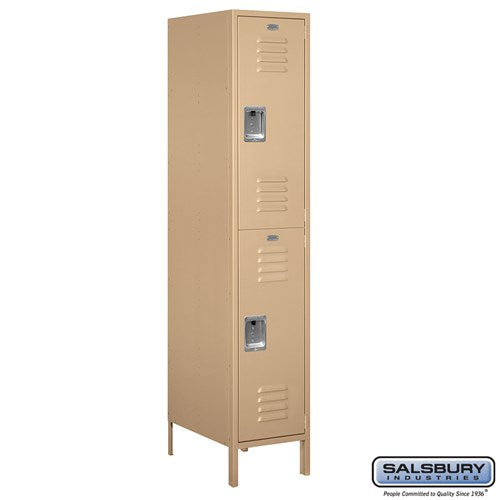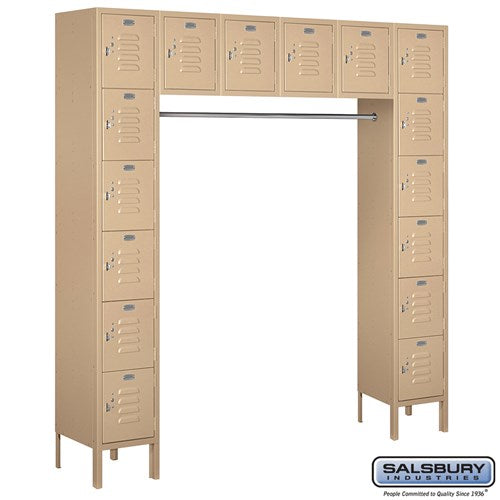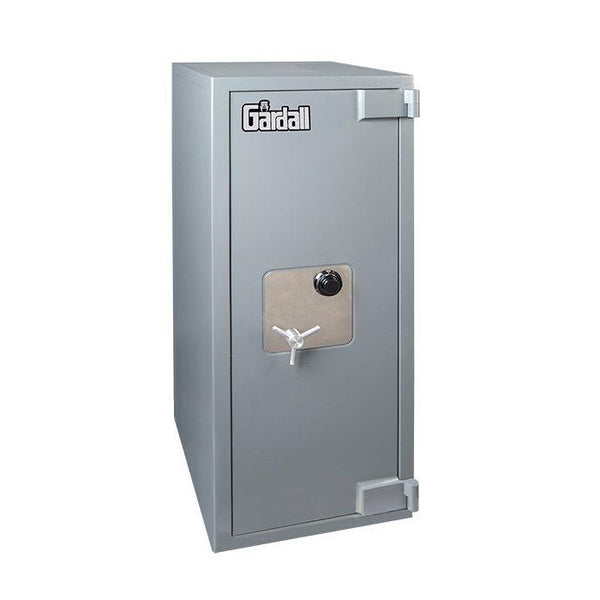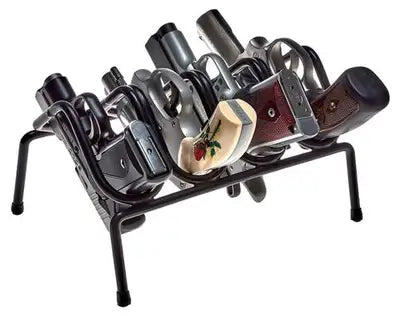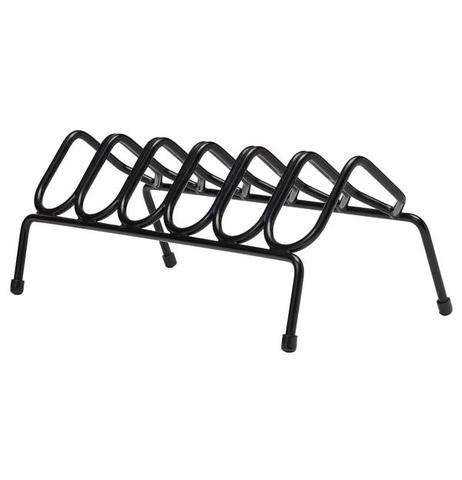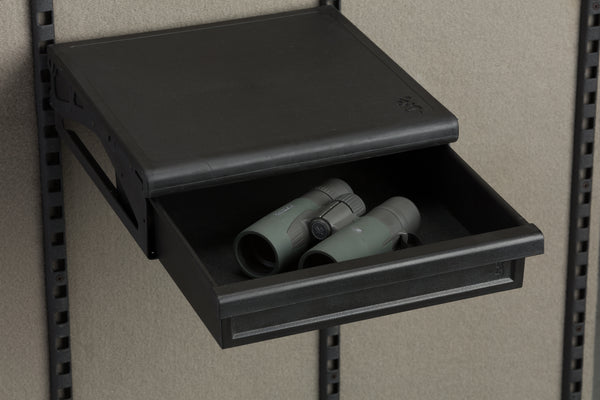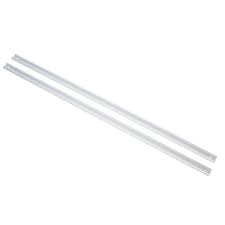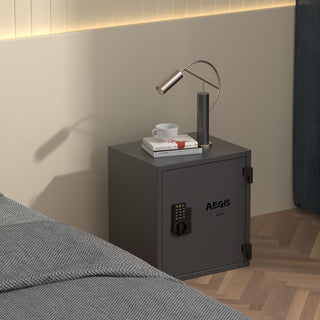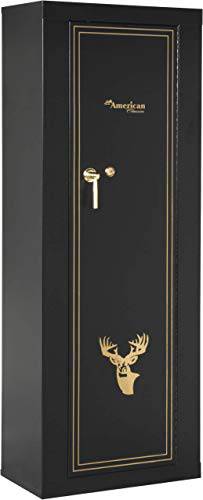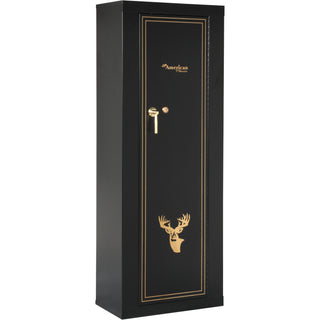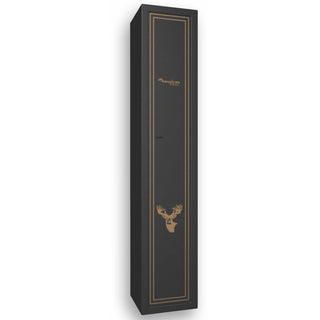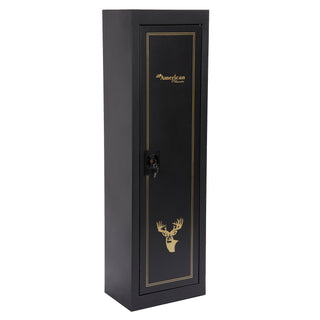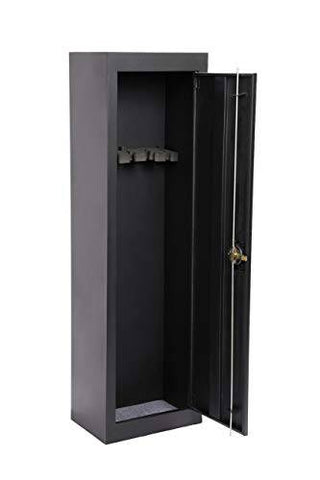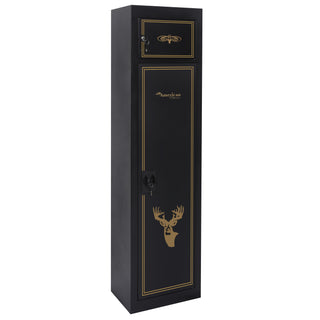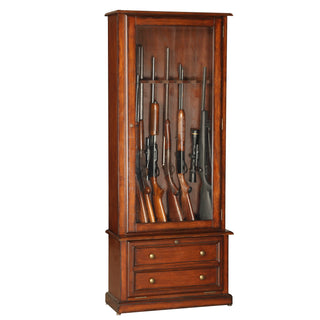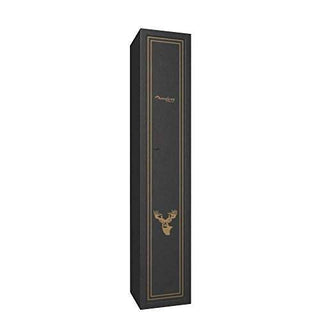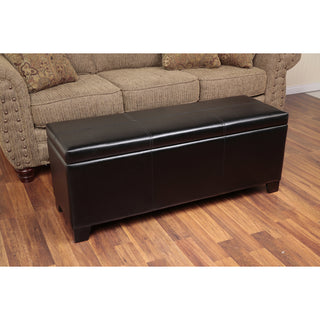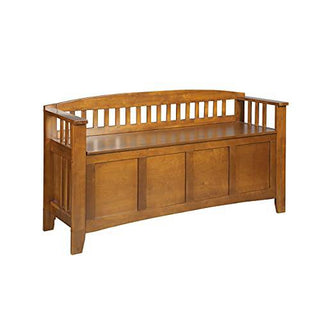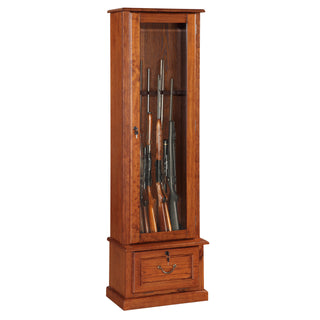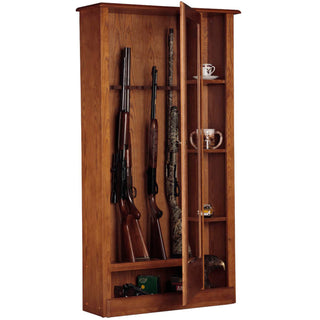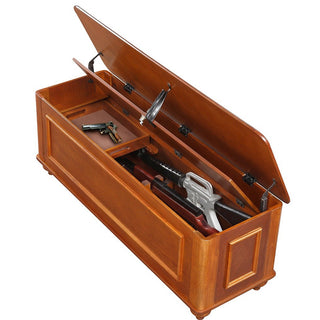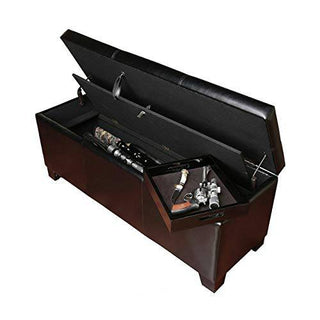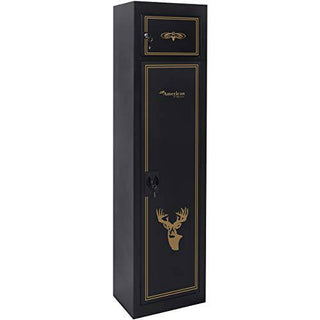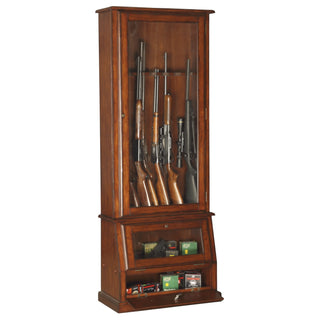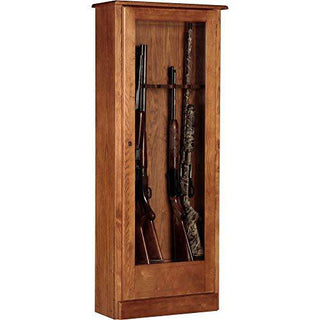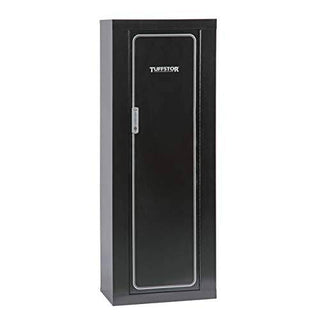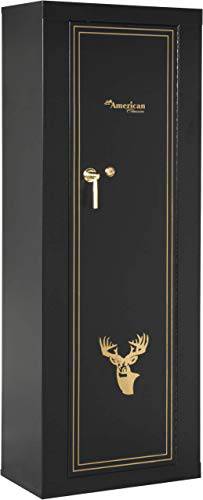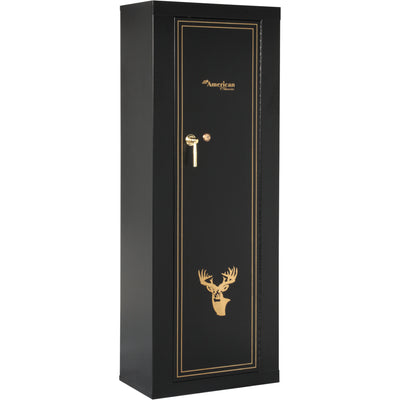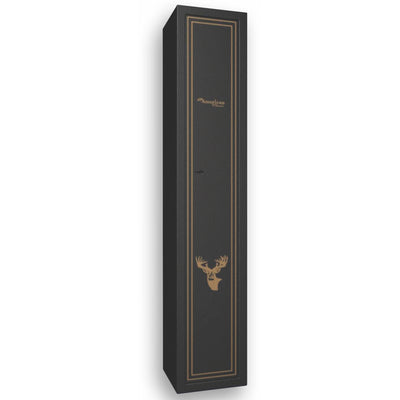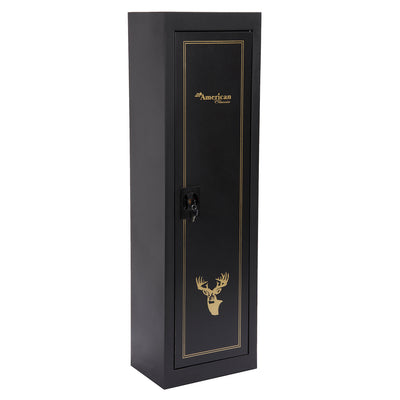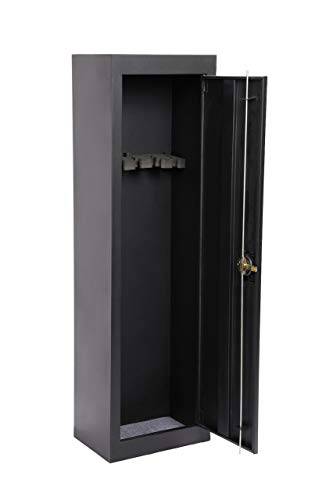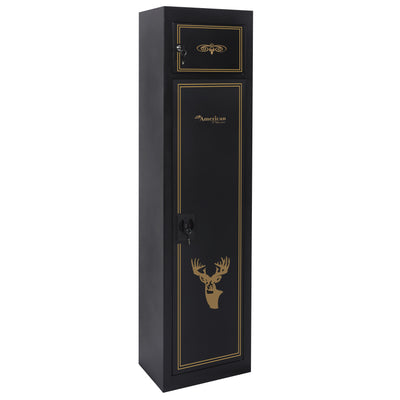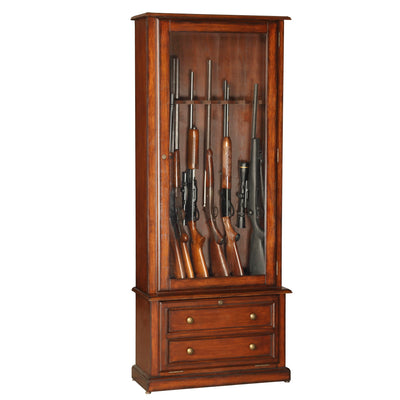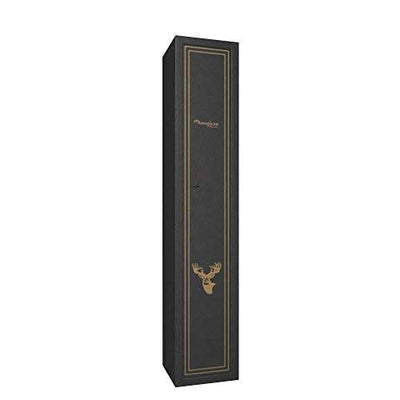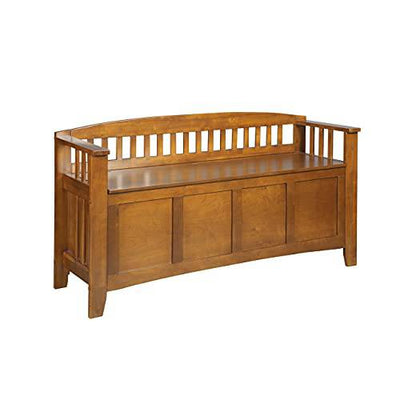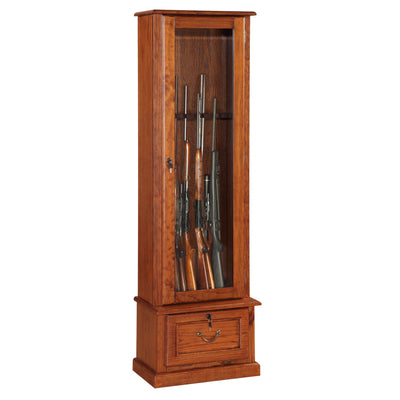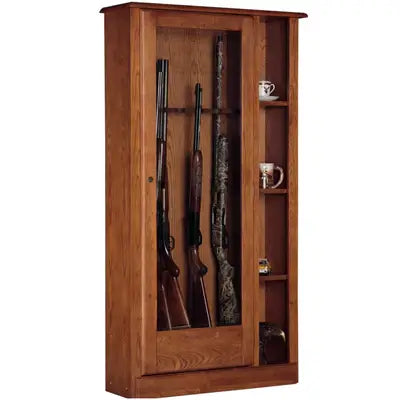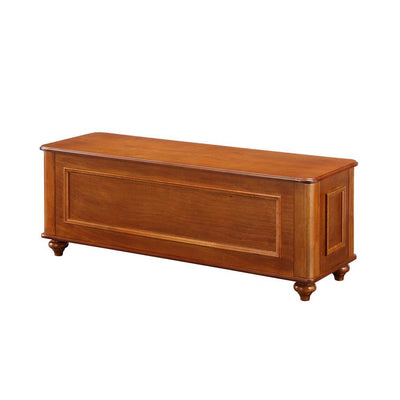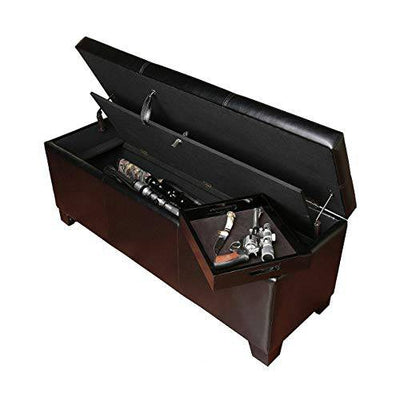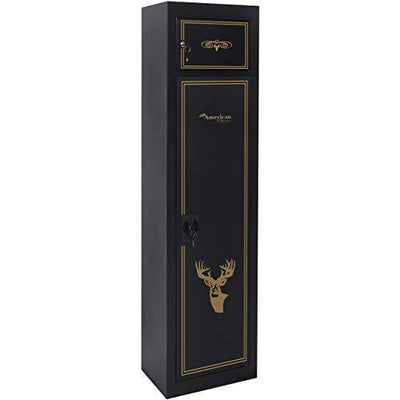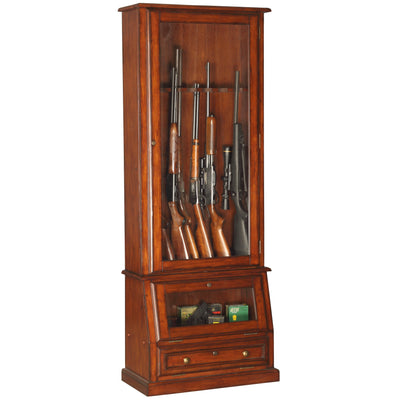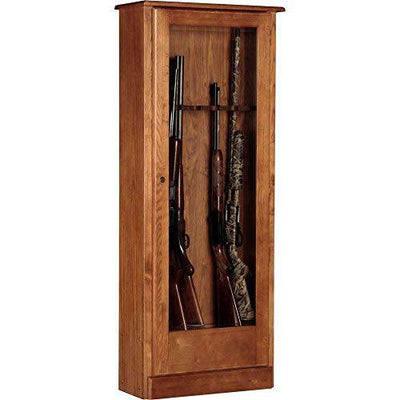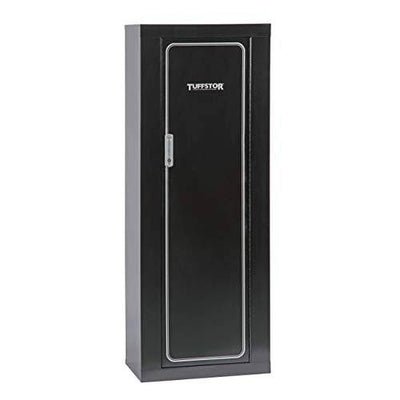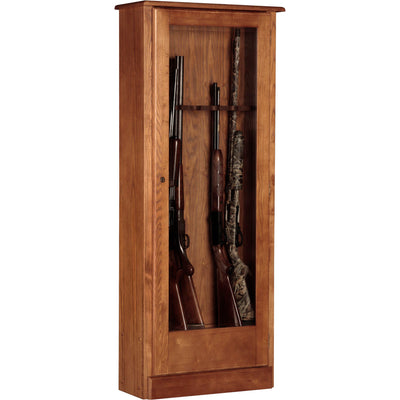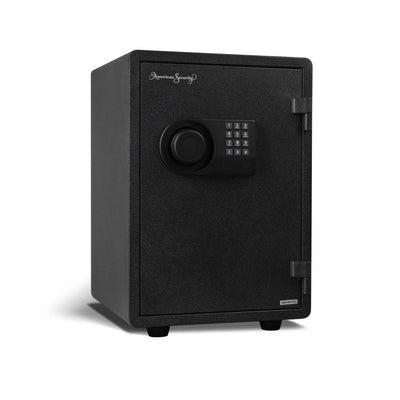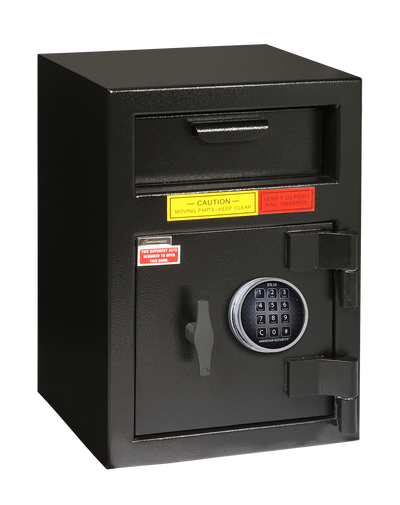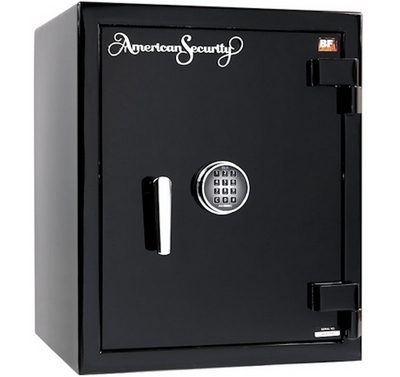*This post contains affiliate links to products. We may receive a commission for purchases made through these links, but it never influences our product selection process.
Table of Contents
Introduction
Gun safes are more than just metal boxes. They're your first line of defense against unauthorized access, theft, and even natural disasters. Whether you're a seasoned gun owner or new to the world of firearms, a reliable gun safe is a must-have. It keeps your weapons secure from curious kids, protects your valuable collection from burglars, and shields your firearms from the damaging effects of fire, flood, or other natural disasters.
But what exactly are gun safes made of, and how do they provide such robust protection? Let's dive in and answer all your questions!
Metals Used to Make Safes

The History
The safe industry has come a long way, adapting to evolving technologies that have transformed how safes are built. One constant, however, has been the use of thick steel in their construction. Steel, known for its strength and durability, makes gun safes resistant to burglaries, natural disasters, and house fires. But this wasn't always the case.
Steel, often synonymous with strength, is not a naturally occurring metal. It's an alloy created by combining carbon with iron. The formulation of steel used today can be traced back to the nineteenth century, but its origins go much further.
The story of steel dates back 4,000 years to the Iron Age. It began with the discovery that iron was tougher and stronger than bronze, the metal traditionally used at the time. Iron quickly became the preferred metal for making better tools and weapons. However, the quality of iron varied greatly depending on its production and the amount of carbon in the alloy. Too much carbon made iron brittle and prone to cracking.
The rise of the railway industry in the 1800s put pressure on the iron industry to keep up with the demand for safer materials. Steel hadn't yet been proven as a reliable construction material, making its production inefficient.
This changed around the 1800s when Europe was racing to produce a better form of steel more efficiently to lower prices. The modern industrial steel that emerged was just what the railway industry needed to address the issue of iron's brittleness and production processes.
The safe industry also benefited from this development. Thanks to late-nineteenth-century capitalists, the steel industry in the United States grew in efficiency and innovation, providing the quality and security that gun owners and the safe industry needed.
Steel Adoption in the Safe Manufacturing World
Like safe manufacturing, the steel business has grown to where it is today. Safes were fashioned of wood in ancient times, long before the age of steel.
As you might expect, that provided little protection from sharp tools or fire. Prior to the development of steel, some safes, such as those found in banks, were fashioned of cast iron.
But there was also the issue of the metal's brittleness, which made it feasible to crack safes open with force or by heating the metal.
It is only logical that steel would become the preferred metal for the construction of sturdy and dependable safes. Steel did not become the most popular metal for safe construction until the mid-to late-1880s.
Steel Alloys; What Are They?

Steel is a metal alloy formed by the combination of carbon and iron. The inclusion of carbon overcomes the problem of cracked iron by improving the material's tensile strength. Because it is more flexible than brittle iron or cast iron, this metal does not shatter under pressure.
Steel has a carbon percentage ranging from the percentages 0.002 to 2.14. The quantity of carbon in the steel can be changed depending on its intended use. Mild steel, for example, has a carbon percentage ranging from percentages 0.05 to 0.25 and a manganese concentration of 0.4 percent. While this is not the strongest form of steel, it can be strengthened by carburizing and rolling the steel.
Other metals can be added to the steel alloy to strengthen the already, relatively stronger qualities of iron. Alongside carbon, chromium, manganese, copper, titanium, nickel, and tungsten are a handful of the elements that can be mixed with steel alloys to allow strengthening it and give it other qualities.
Adding chromium to steel, transforms it into stainless steel. When polished, this steel is robust, has greater corrosion resistance, and has a smooth, shining look. It is also one of the most effective varieties of gun safe steel.
The point when steel is melted can further be boosted by adding tungsten. This helps to keep it from potentially being sliced through using blow torches. Additionally, adding the metal nickel is another approach to improve steel's strength as well as flexibility, preventing it from fracturing under extensive pressure.
Types of Steel Best Suited For Safes
Metal fabrication for gun safes is a complex process. With various metals, alloys of metals, and even grades of alloys of metals to choose from, it's essential to know what factors contribute to the highest-quality steel being used for improved security.
Steel Manufactured In U.S.
American steel typically has to meet standards set by organizations such as The American Society for Testing and Materials (ASTM). They subject American steel to strict rules and testing, ensuring more consistent quality across the board. This is especially important for gun owners who prioritize gun safety and want to ensure their firearms are stored securely.
Pickled And Oiled Steel
Steel corrodes and loses its strength over time, which can lead to the swift deterioration of gun safes. To prevent this, some high-quality safe manufacturers use a special grade of treated steel known as "pickled and oiled" steel. This steel is chemically etched to remove surface carbon corrosion and then oiled to prevent surface rust, making it last much longer.
Solid Steel Construction
The best gun safes are typically made from solid steel, providing a high security level against burglary attempts. The thickness of the steel is measured in gauges, with lower gauge numbers indicating thicker steel. A safe with 10-gauge walls is more secure than one with 14-gauge walls. Solid steel construction is essential for the proper storage of firearms and protection against natural disasters.
Steel Alloys
Steel alloys are created by adding other metals to the steel, enhancing its properties. For example, adding chromium to steel transforms it into stainless steel, which is robust, corrosion-resistant, and has a smooth, shiny appearance. Tungsten can be added to increase the melting point of steel, making it more resistant to cutting with blow torches. Nickel can be added to improve steel's strength and flexibility, preventing it from fracturing under extensive pressure.
Steel's Role in Fire Protection
The quality of steel plays a crucial role in the fire protection capabilities of a gun safe. Thicker steel walls can help in retaining the internal temperature of the safe, preventing rapid heat transfer. When combined with quality insulation, steel can significantly enhance the fire resistance of a safe, ensuring the safety of your weapons and valuables in the event of a fire.
By considering these factors and choosing a gun safe made from high-quality steel, you can ensure the security and protection of your firearms and valuables. Remember, the most reliable safes are made with the best, USA-made, pickled-and-oiled steel.
Understanding Steel Gauge in Safes
Steel gauge is a standard unit of measure used to determine the thickness of a metal sheet, in this case, the steel used in safes. The gauge number and the thickness of the steel are inversely related, meaning the lower the gauge number, the thicker the steel.
12-Gauge Steel:
A common thickness for entry-level gun safes. It offers basic protection and is more suitable for preventing unauthorized access rather than thwarting determined burglars.
10-Gauge Steel:
Thicker than 12-gauge, this steel provides enhanced security. It balances protection and cost well, making it a popular choice for mid-range safes.
8-Gauge Steel:
Even more robust, 8-gauge steel safes are designed to offer higher resistance against break-in attempts. They are often found in higher-end safes.
7-Gauge and Lower:
These are the thickest steel gauges commonly used in safes. They provide top-tier protection, making them ideal for those who want the best security for their valuables.
The thickness of the steel is paramount when evaluating the security level of a safe. Thicker steel (lower gauge) provides enhanced resistance against break-in attempts, such as drilling, cutting, or prying. It also plays a significant role in the safe's durability and longevity. When choosing a safe, understanding the steel gauge can guide you to make a more informed decision, ensuring your valuables remain protected.
The Different Kinds of Gun Safes
Most home safes share a few common characteristics: they're locked, heavy, and made of drill-resistant steel in the doors and walls. These safes also provide some level of weather protection. However, the overall size and interior storage features vary between different models, depending on the types and quantities of guns they're meant to house. Among the several types are:
Handgun Safes:
This type of safe can be as compact and portable as the dimensions and size of a briefcase, designed to contain one pistol and ideal for those who carry a firearm with them everywhere. Larger handgun safes can store numerous firearms on multiple shelves in a device the size of a milk crate. They can be made into car consoles for use in vehicles.
Long-gun Safes:
A tall safe is necessary for longer guns such as rifles and shotguns. The internal height should be around 60 inches (150 centimeters); the width should be determined by the amount of guns that may be safely stored. The capacity of a gun can range from one to dozens.
Multi-purpose Gun Safes:
Multi-purpose safes are manufactured to hold pistols, long guns, confidential documents, jewelry, and any other valuables. They can be large or tiny, portable or fixed, and equipped with various compartments (shelves, drawers, and hooks) to securely retain various objects.
In these terms, selecting a type of gun safe is very straightforward — do you have one pistol and do not intend to get more? Safe for handguns. Do you enjoy collecting rifles? On the other hand, selecting specific features and accessories can be more difficult.
Features of Gun Safes
Space is merely the beginning. When purchasing gun safes, there are various factors to consider.
Electronic Lock vs. Dial Lock:
When the correct numbers are entered in the correct order, a dial or combination lock grants entry. This mechanism is self-sustaining and does not require maintenance. The dial lock, on the other hand, takes longer to open than an electronic lock and does not automatically lock when the safe door is closed. Electrical locks, such as keypad and biometric, fingerprint-based locks, provide for faster, easier access and automatic locks. However, like all electronic equipment, they lose performance over time, as parts tend to stop functioning, necessitating consistent battery change.
Steel Strength:
A safe's walls and doors are constructed of steel, and the thicker the steel, the more difficult it is to drill into. The thickness of steel is measured in gauges, and the smaller the gauge, the thicker the steel. A safe with 10-gauge walls is more secure than one with 14-gauge walls.
Weight:
Large gun safes can weigh hundreds to thousands of pounds. An empty weight of 750 pounds (340 kilograms) is a suitable starting point to deter robbers using dollies. They should ideally be anchored to the floor or wall as well.
To conclude, no one wants mediocre levels of security, so it is quite useful to keep this information in mind when looking for the next safe, and keep in mind that the most dependable safes are made with the finest, USA-made, pickled-and-oiled steel.
Conclusion
Selecting the right gun safe involves considering several crucial factors, including the materials used in its construction, the thickness of the steel, the fire protection capabilities, and the locking mechanism. Solid steel construction, especially with USA-made, pickled-and-oiled steel, ensures robust burglary protection and longevity. A gun safe with a high fire rating offers valuable fire protection for your firearms and other valuables.
When shopping for a gun safe, it's essential to consider the types of gun you own, whether you need a handgun safe or a multi-use gun safe for various firearms. Quick access features and increased security options can also influence your decision. Remember, the best quality gun safes provide a secure safe environment to securely hold your firearms.
By understanding these factors and their importance, you can make an informed decision and select a gun safe that meets your specific needs and provides the security and protection you require for your firearms and valuables.









